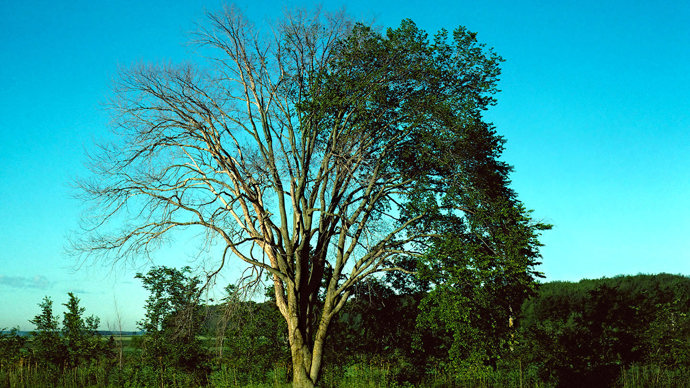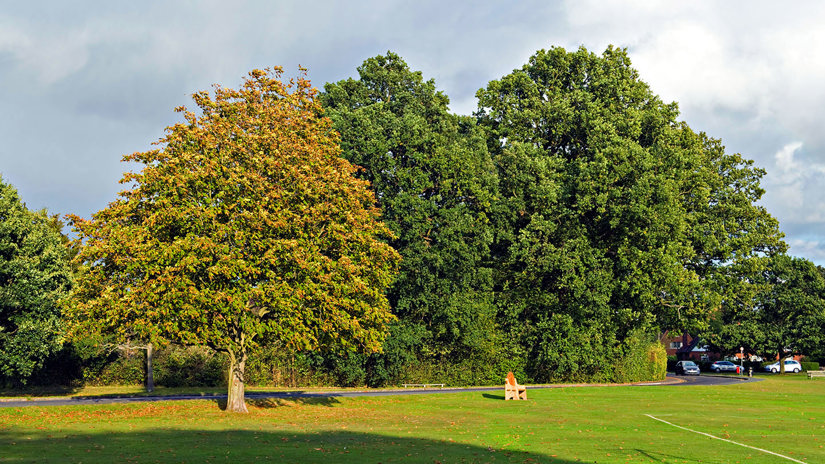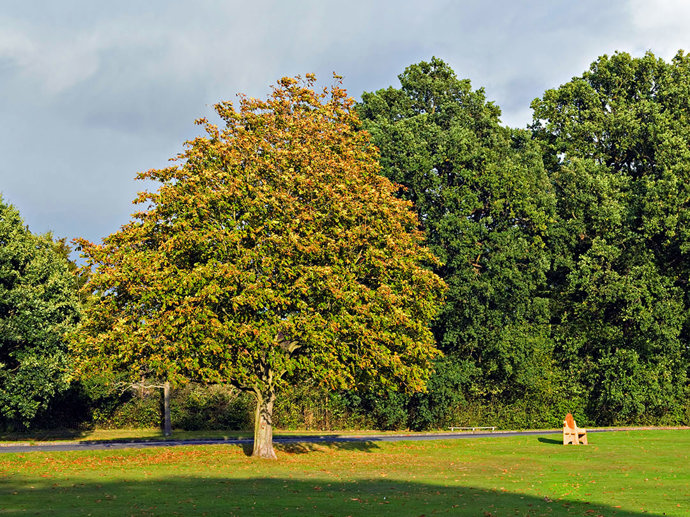Common name: Dutch elm disease
Scientific name: Ophiostoma novo-ulmi
What does it affect?: elm species (tree in the genus Ulmus)
Areas affected so far: throughout the UK except for the far north
Origin: thought to be Asia
This now infamous tree disease has killed millions of elm trees in the UK over the last 50 years. It’s changed parts of our landscape forever and it’s still spreading north.
Common name: Dutch elm disease
Scientific name: Ophiostoma novo-ulmi
What does it affect?: elm species (tree in the genus Ulmus)
Areas affected so far: throughout the UK except for the far north
Origin: thought to be Asia
Symptoms include:
Dutch elm disease is caused by the fungus Ophiostoma novo-ulmi which is spread by elm bark beetles. It got its name from the team of Dutch pathologists who carried out research on the diseases in the 1920s.

Credit: Winston Fraser / Alamy Stock Photo
Elm bark beetles breed in the bark of cut, diseased or otherwise weakened elm trees then disperse to healthy elm trees where they feed. As they feed, the spores of O. novo-ulmi are introduced into the xylem (channels for water and nutrients) of the healthy tree, releasing toxins and causing the vessels to block and the tree to wilt and die.
Since its introduction to the UK, it has killed millions of our elm trees. It has devastated populations in mainland Europe and North America too.
Dutch elm disease was accidentally imported into the UK from Canada in the late 1960s. It spread quickly, reaching Scotland in just 10 years.
The movement of elm products caused the spread of the disease, particularly on logs with bark attached but also through saplings, crates and mulching bark.
There has been work in universities across the world to develop resistant elms and these hybrids are subjected to inoculum trials to assess their resistance to Dutch elm disease.
While these resistant strains look similar to English varieties of elm, it’s important to realise that they are exotic species. They might not perform the same ecosystem function so replacing elms with them is not a complete solution.
The spread of the disease can also be slowed with sanitary felling of dead and dying trees which removes the habitat of the beetles which carry the fungus. This type of management has been very successful in East Sussex where there are now more elms than there were before the disease hit. Some elms have been replaced with plants propagated from trees that have resisted the disease so far.
To the spread of pests and diseases like Dutch elm disease we have:


We are fighting back against pests and diseases. Find out what we're doing to prevent the spread and protect the UK’s trees.
More pests and diseases: